More and more businesses are using Kubernetes to deploy, manage, and scale their workloads. The system allows for efficient resource use and offers high availability and scalability, making it ideal for modern cloud-native applications. Yet, without cost monitoring and optimization, managing Kubernetes environments is an uphill battle.
One platform for Kubernetes cost optimization is CAST AI. Although, you might currently be using CAST AI but are considering switching to a different platform.
In this article, we explore some of the CAST AI alternatives to consider.
What Is CAST AI?
CAST AI is a Kubernetes automation platform that optimizes costs across AWS, Azure, and Google Cloud Platform (GCP). It monitors and optimizes Kubernetes clusters in real time to cut cloud costs by over 50%.
CAST AI features:
- Optimizes cloud costs with automated scaling, provisioning, and bin packing.
- Breakdown Kubernetes costs by clusters, workloads, and labels.
- Rightsizes resource requests and limits based on demand.
- Continuously optimizes configurations to maximize cost savings without compromising performance.
- Manages cloud infrastructure for efficient operation.
- Real-time alerts.
- Uses spot instances to reduce costs while ensuring high availability.
Why You Might Need a CAST AI Alternative
Here are several reasons why you might switch to a CAST AI competitor.
- CAST AI’s optimization might lead to inefficient use of allocated resources.
- The platform can be complex to set up.
- CAST AI mainly supports Kubernetes environments. This limits its utility for businesses needing broader cloud management solutions.
- Some features, like cost insights and recommendations, still require manual implementation.
- While CAST AI can use spot instances to save money, this may not always be the best approach for all workload types due to its potential instability and reclaim risks.
- Advanced configurations and external tools are necessary for full functionality.
- Additional fees might apply to access advanced features, such as a financially backed SLA, increasing the total cost of using CAST AI.
- The platform may lack full automation for some cost optimization processes.
- As Kubernetes environments grow, the manual management of tools like cAdvisor within CAST AI can become cumbersome.
- Rapid changes in cloud usage patterns might need more flexible and adaptive solutions than CAST AI can offer, particularly for reserved instances and long-term commitments.
If these CAST AI limits hinder your operations, here are other Kubernetes cost optimization tools to consider.
Best CAST AI Alternatives To Use This Year
1. CloudZero
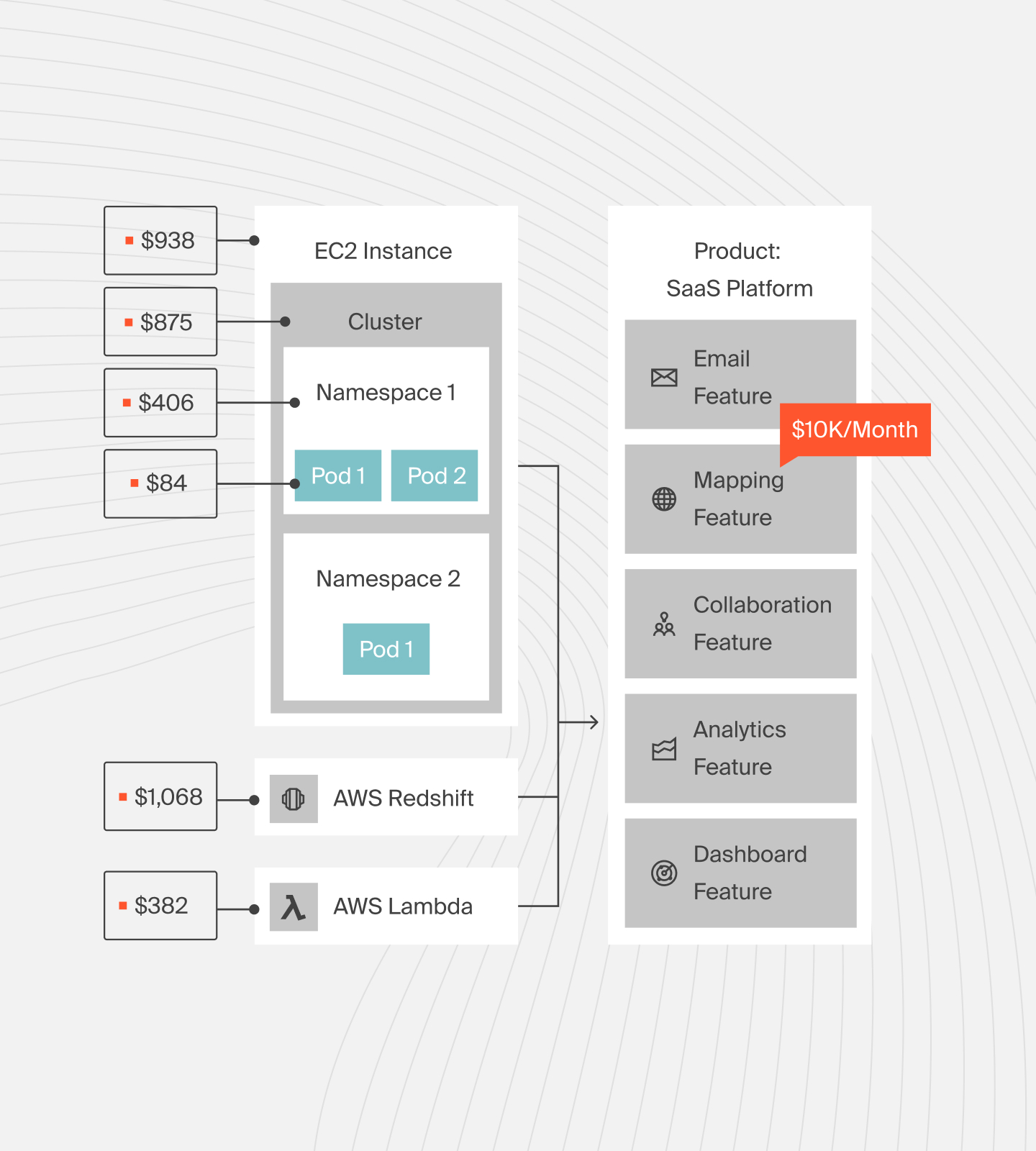
CloudZero unifies Kubernetes spending with other cloud costs in a single view. Unlike most platforms that separate these costs, CloudZero integrates them. This unified approach helps businesses track and analyze all cloud costs together, spotting inefficiencies and saving money.
CloudZero tracks costs per pod, cluster, and namespace and offers detailed insights into cloud spending. It helps businesses allocate 100% of their Kubernetes spend, regardless of labeling quality, and link it to business value. This ensures all costs are accountable and align with business goals.
2. Google Kubernetes Engine
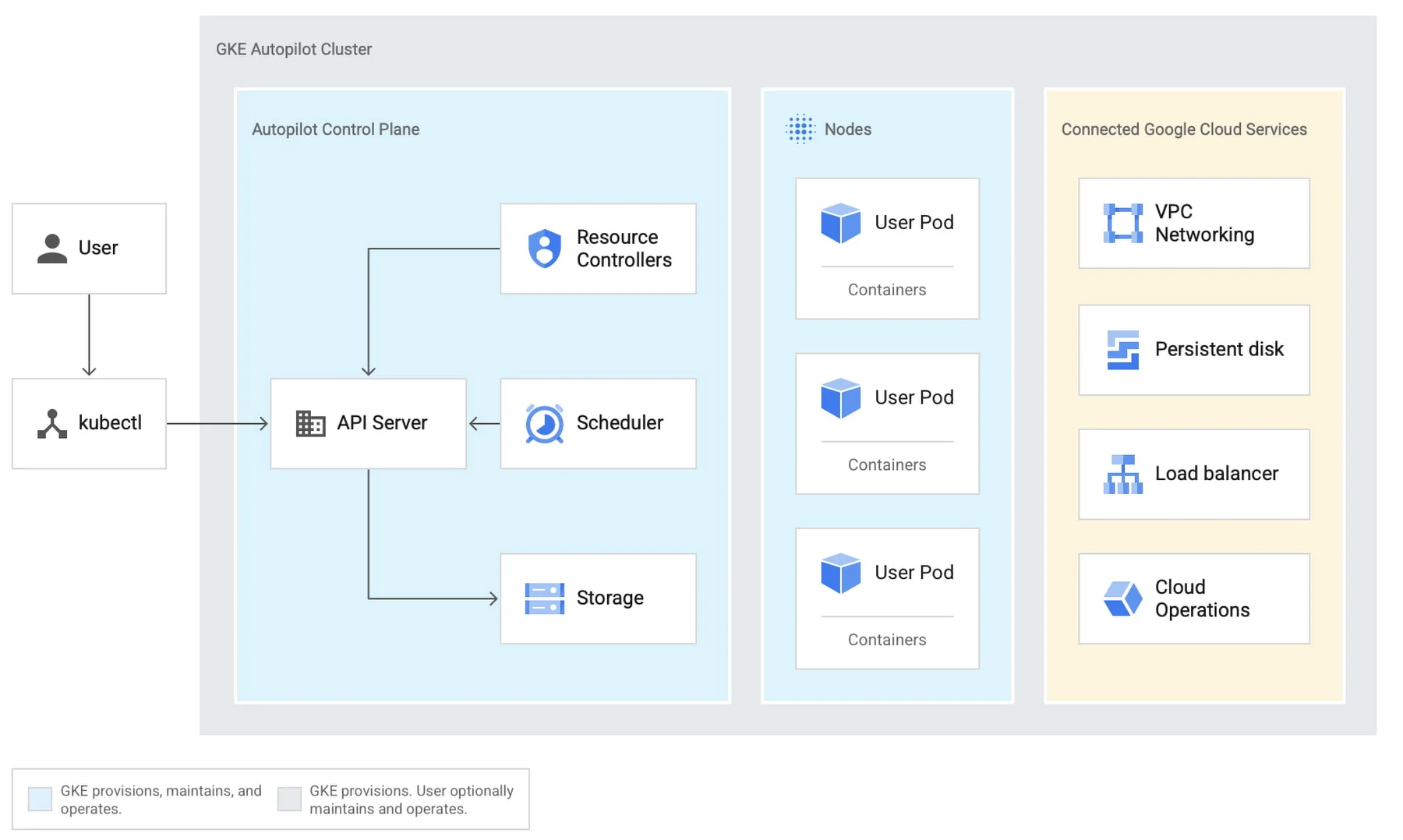
If you use Google Cloud Platform (GCP), this is where you may want to start. Google Kubernetes Engine (GKE) offers several features for Kubernetes cost optimization. Its Autopilot Mode automates the management of Kubernetes clusters. It handles tasks such as scaling, node upgrades, and security patching, reducing manual overhead and ensuring proper resource usage.
The Committed Use Discounts (CUDs) feature offers significant savings for long-term usage commitments. GKE also uses Spot VMs, providing discounts using spare capacity in Google’s data centers. This is ideal for non-critical workloads.
Through the Google Cloud Console, GKE helps identify savings opportunities by analyzing cluster usage and recommending adjustments.
3. Amazon Cloudwatch
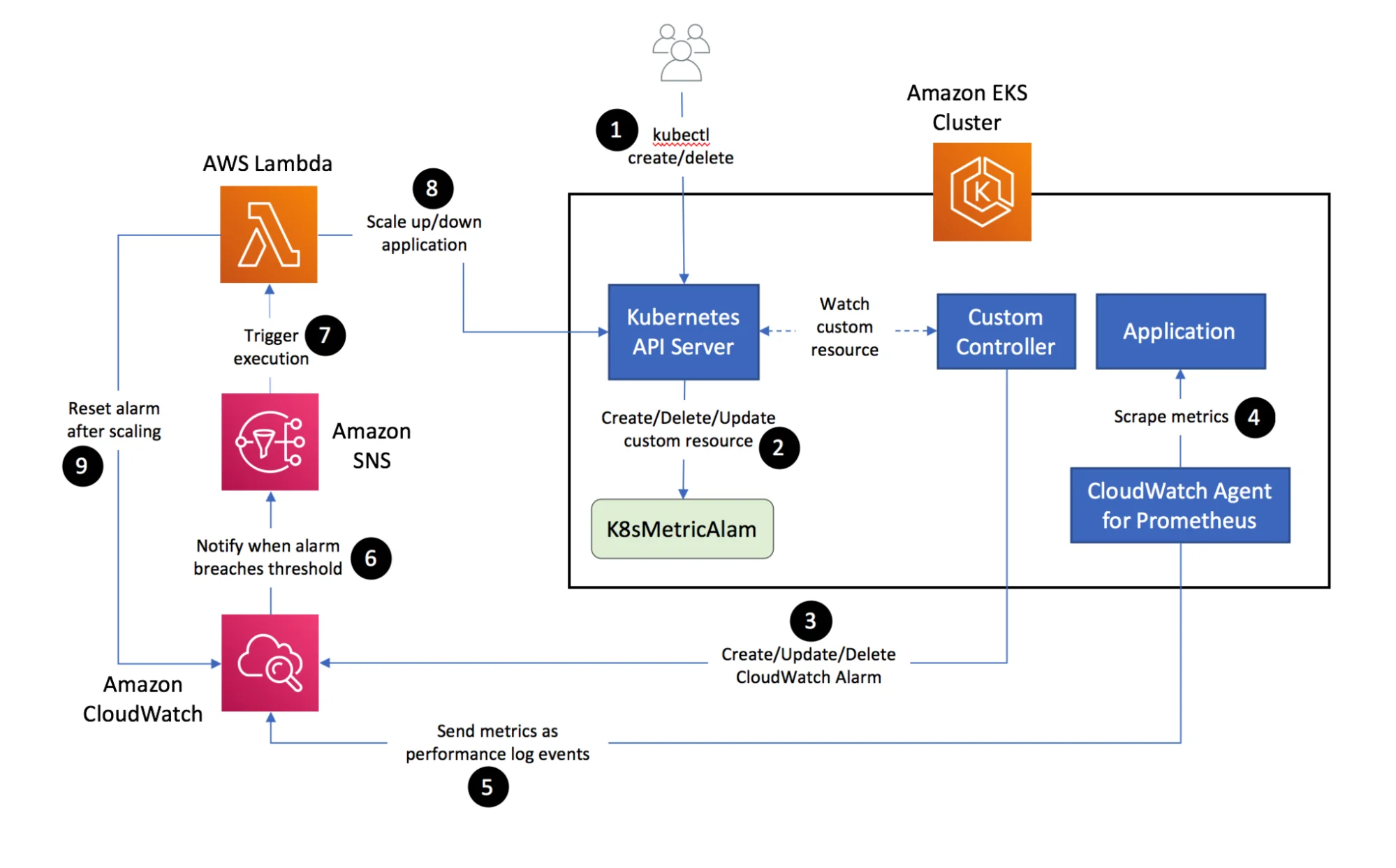
Amazon CloudWatch uses Container Insights to collect metrics, logs, and traces for containerized applications to identify inefficiencies and optimize resource allocation.
It works with the Cluster Autoscaler for Amazon EKS to adjust the number of EC2 instances based on demand. The Horizontal Pod Autoscaler (HPA) also scales pods based on CPU and memory usage metrics. These features allow for continuous monitoring and dynamic scaling, optimizing Kubernetes costs.
For more on how AWS EKS works and integrates with Amazon CloudWatch Container Insights and CloudZero for Kubernetes cost optimization, check out our guide.
4. Amazon Auto Scaling
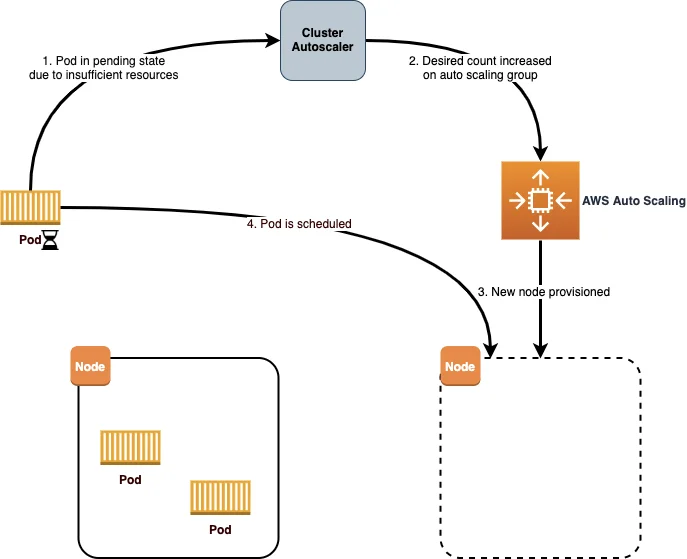
Amazon Auto Scaling optimizes Kubernetes costs by adjusting the number of nodes in a cluster based on demand. It uses tools like the Cluster Autoscaler and Horizontal Pod Autoscaler (HPA) to manage resource allocation. The Cluster Autoscaler changes the number of EC2 instances based on pod requirements, ensuring the cluster scales with workload changes. This prevents overprovisioning and underutilization, helping to control costs.
Like CAST AI, Amazon Auto Scaling also integrates with Spot Instances to reduce costs by up to 90% compared to On-Demand Instances. Right-sizing allocates compute resources based on actual usage needs, further optimizing costs.
5. nOps
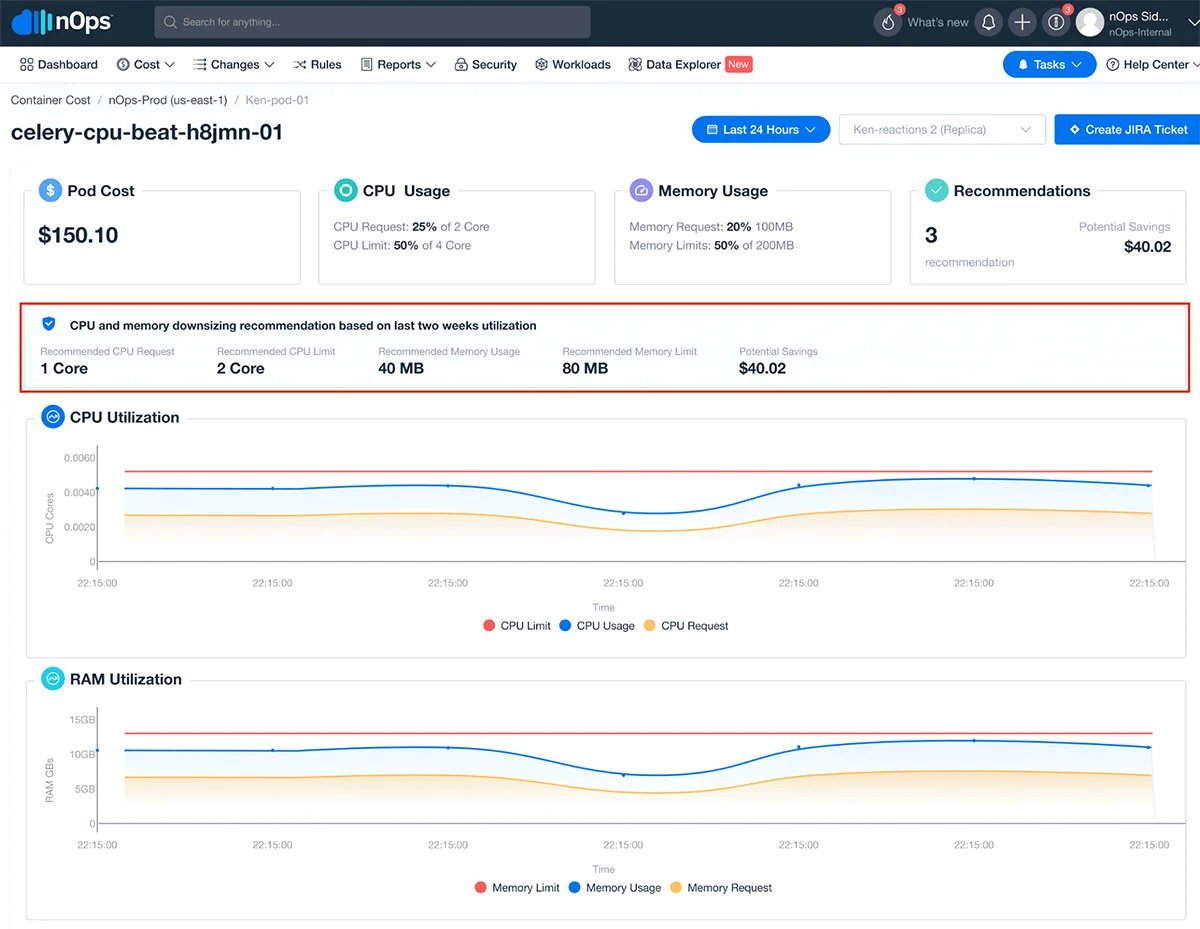
nOps offers detailed cost allocation and insights at the pod, node, and cluster levels. The platform uses lightweight agents to collect real-time data on resource usage, cost, and savings opportunities. This visibility helps identify and eliminate waste, ensuring resources are used well across all Kubernetes deployments.
nOps also integrates with AWS Spot Instances, using discounted spare capacity to save costs. The platform supports advanced autoscaling mechanisms, including Cluster Autoscaler and Karpenter. These tools adjust resource allocation based on real-time demand and predefined policies. nOps also recommends Reserved Instance purchases to optimize long-term savings, making it a robust solution for Kubernetes cost management.
6. Xosphere

Xosphere Instance Orchestrator is a product of Xosphere that optimizes Kubernetes costs. It integrates with Amazon Auto Scaling Groups to monitor the instances within each group. It then switches between On-Demand and Spot instances based on availability and price. When Spot instance capacity is available at a lower price, it replaces On-Demand instances with Spot instances. When Spot capacity is no longer available, it switches back to On-Demand instances. This automatic switching ensures applications remain available and reduces EC2 costs by up to 80%.
Instance Orchestrator integrates with container orchestration platforms like ECS, Amazon EKS, and vanilla Kubernetes. It also partners with CloudZero to manage AWS Spot instances, ensuring 100% reliability at a lower cost.
7. CloudBolt
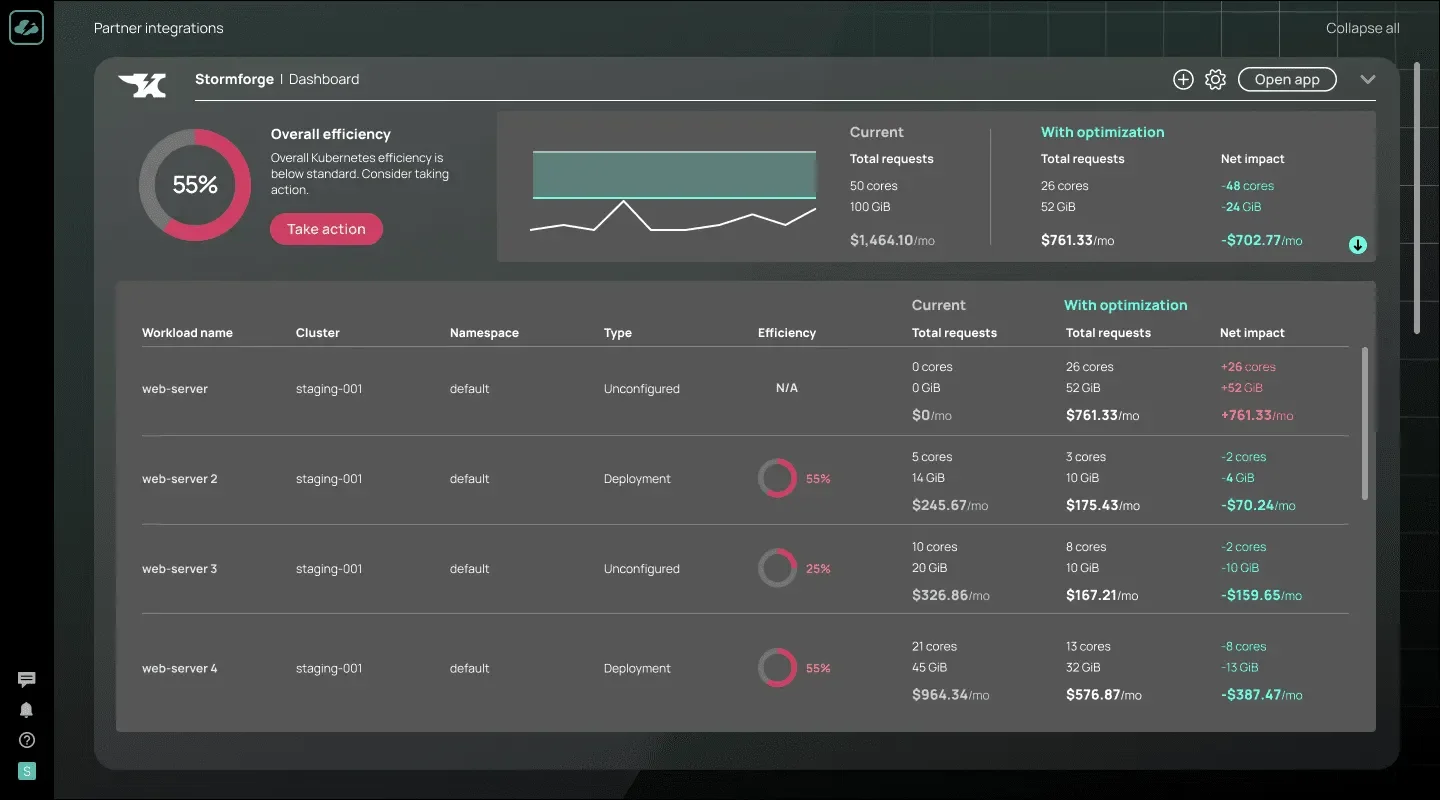
From the outset, CloudBolt is a hybrid platform, while CAST AI is cloud-native.
The platform optimizes Kubernetes costs by utilizing augmented FinOps to improve efficiency. It analyzes resource use to identify inefficiencies and recommends ways to right-size Kubernetes clusters.
CloudBolt integrates with StormForge for shared cost allocation. This integration manages Kubernetes spend within the entire cloud ecosystem. By including Kubernetes clusters in broader cost optimization workflows, CloudBolt manages costs across all cloud resources. It gives visibility and control over Kubernetes spending in the context of overall cloud costs.
8. Datadog
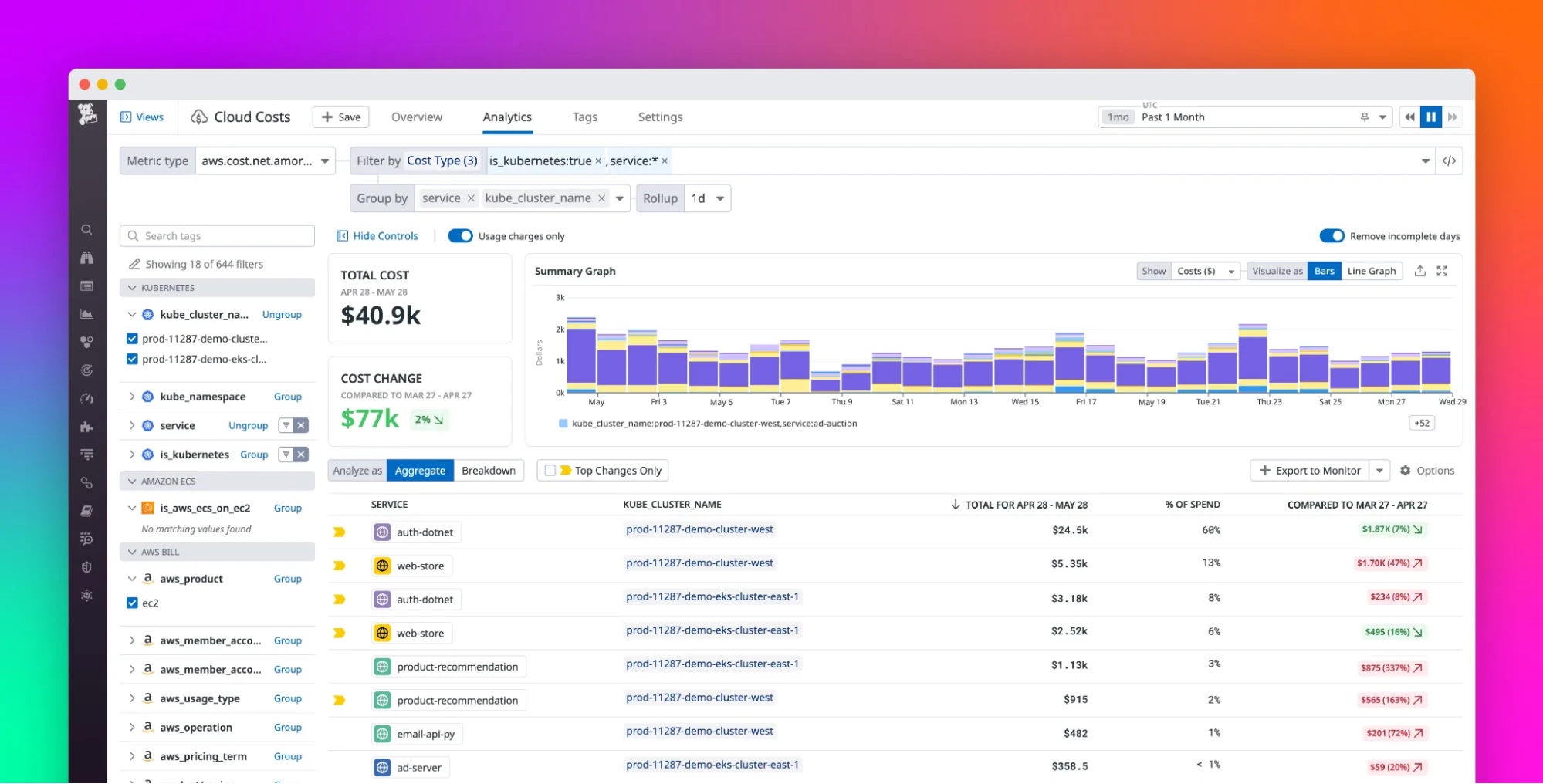
Datadog is the go-to alternative to CAST AI for both Kubernetes observability and monitoring.
Datadog’s Cloud Cost Management provides visibility into Kubernetes and ECS spending. It integrates cost data with observability metrics, helping users identify inefficiencies and optimize container usage.
Datadog Kubernetes Autoscaling continuously monitors and automatically rightsizes Kubernetes resources. It scales clusters based on real-time and historical metrics. This reduces idle resources and avoids overprovisioning.
9. Spot.io
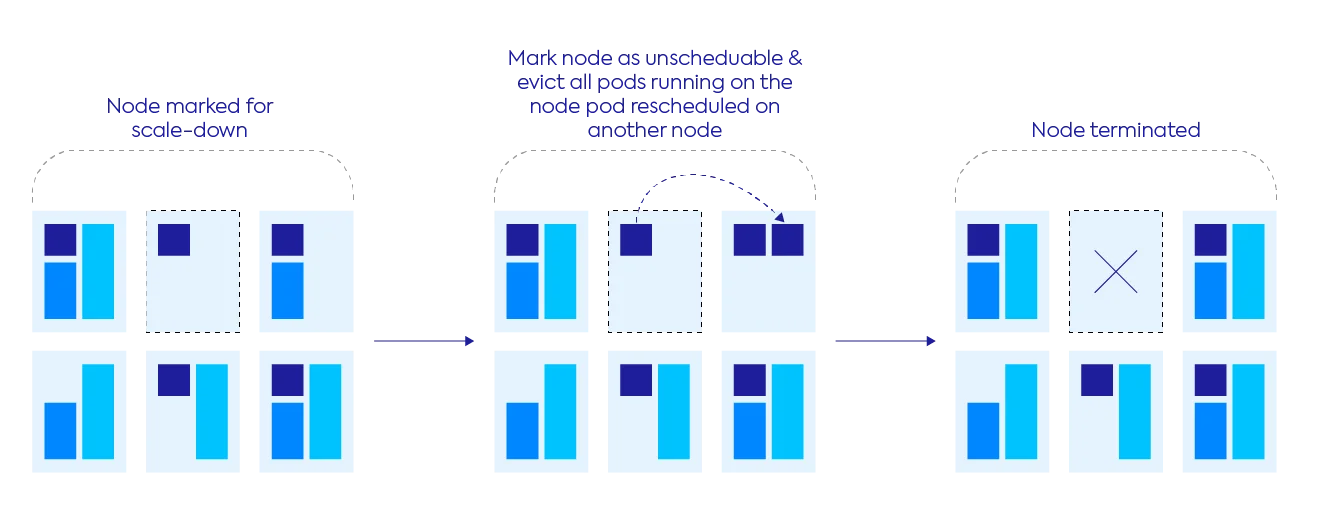
Container-driven Autoscaling is the main feature in Spot.io that optimizes Kubernetes costs. It adjusts cluster size based on real-time workload demands. It scales up when demand increases and scales down when resources are underutilized, preventing overprovisioning and reducing costs.
Like CAST AI, Spot.io also uses Spot Instances to offer up to 90% cost savings compared to On-Demand instances.
10. AppDynamics
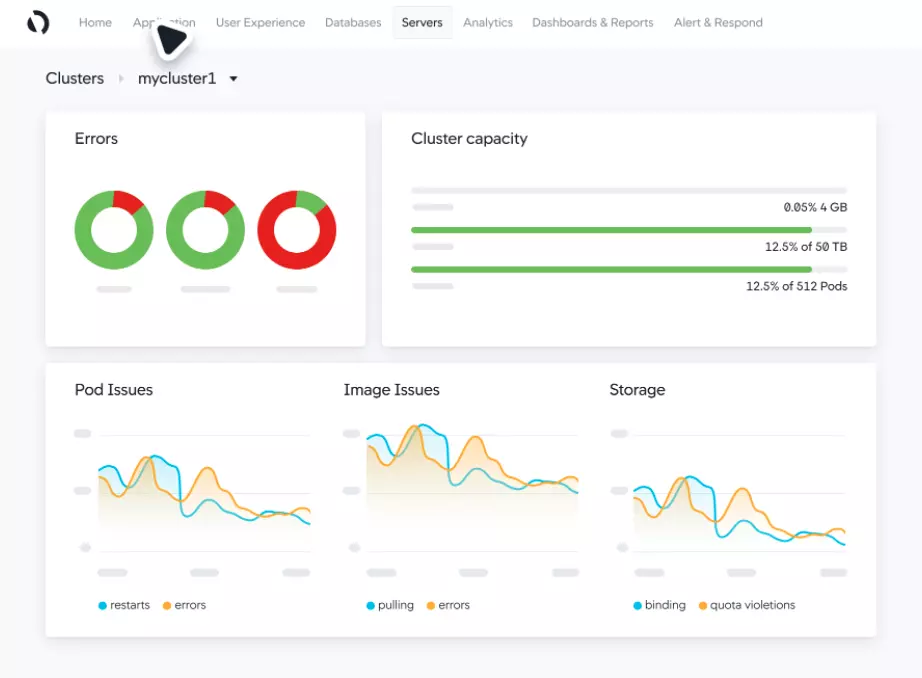
AppDynamics offers Kubernetes cost optimization with its Application Resource Optimizer (ARO). ARO uses machine learning to adjust resource allocation and configurations. This automation improves performance, optimizes resource usage, and reduces costs.
AppDynamics also provides visibility into Kubernetes metrics with its Cluster Agent. This tool collects data from each node and namespace, revealing resource use, pod errors, and node performance issues. Integrating ARO with the Cluster Agent also enhances the ability to identify and address performance issues.
11. Splunk
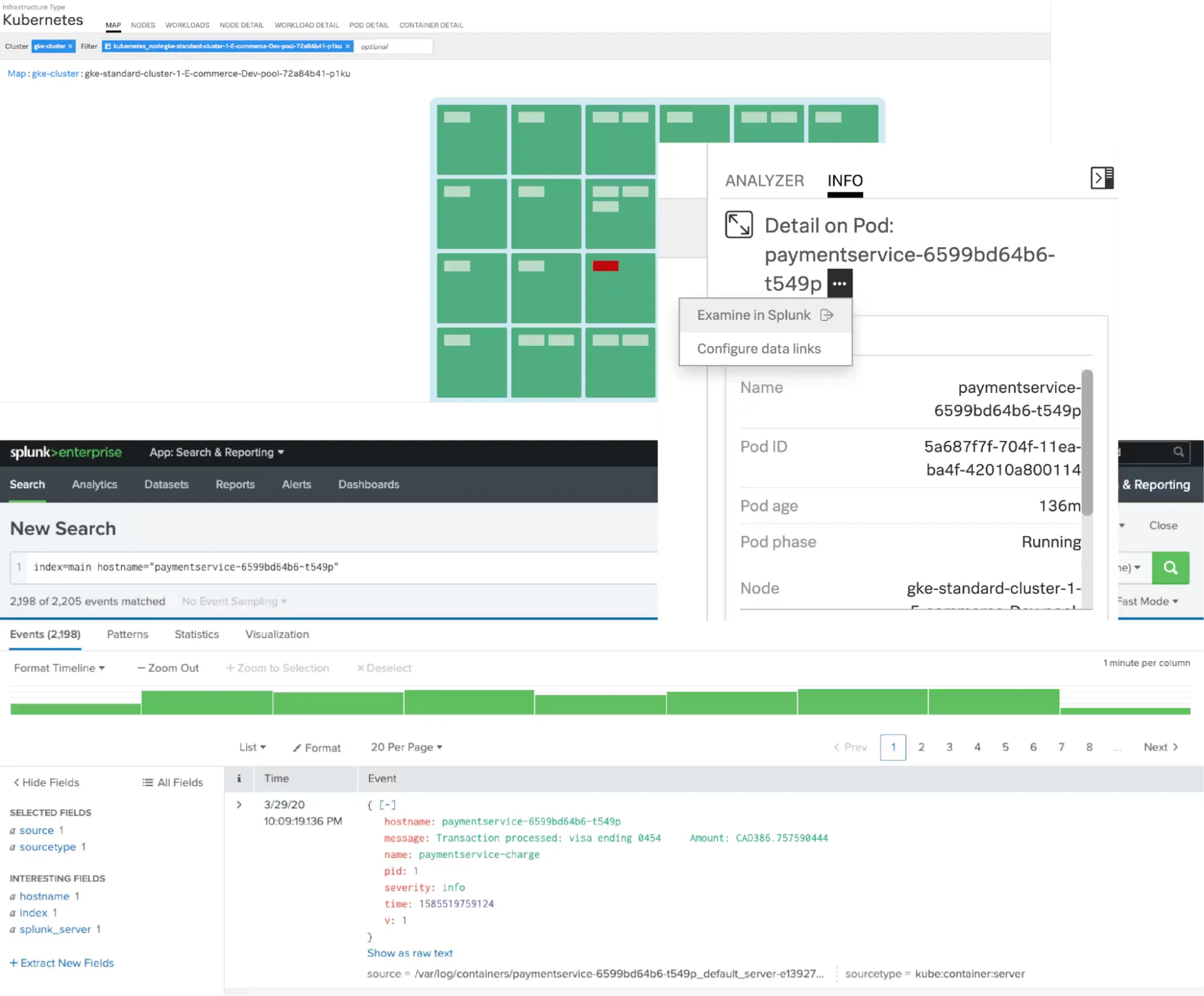
The Kubernetes Navigator in Splunk supports real-time monitoring and AI-driven analytics. It offers insights into cluster resource usage, node and pod availability, and health.
The Splunk Operator for Kubernetes simplifies deploying and managing Splunk in Kubernetes. It automates tasks and integrates with Splunk’s observability tools. This integration features insights into cost drivers and performance metrics, helping users optimize Kubernetes spending by linking application performance to infrastructure costs.
How to Achieve a Unified Approach to Cloud Cost Management
The above tools are some of the best CAST AI alternatives for Kubernetes cost optimization. If you are struggling with cost management, you need to identify which customer, service, feature, product, or team cause cost spikes and why they occur. A cost intelligence tool can help with this.
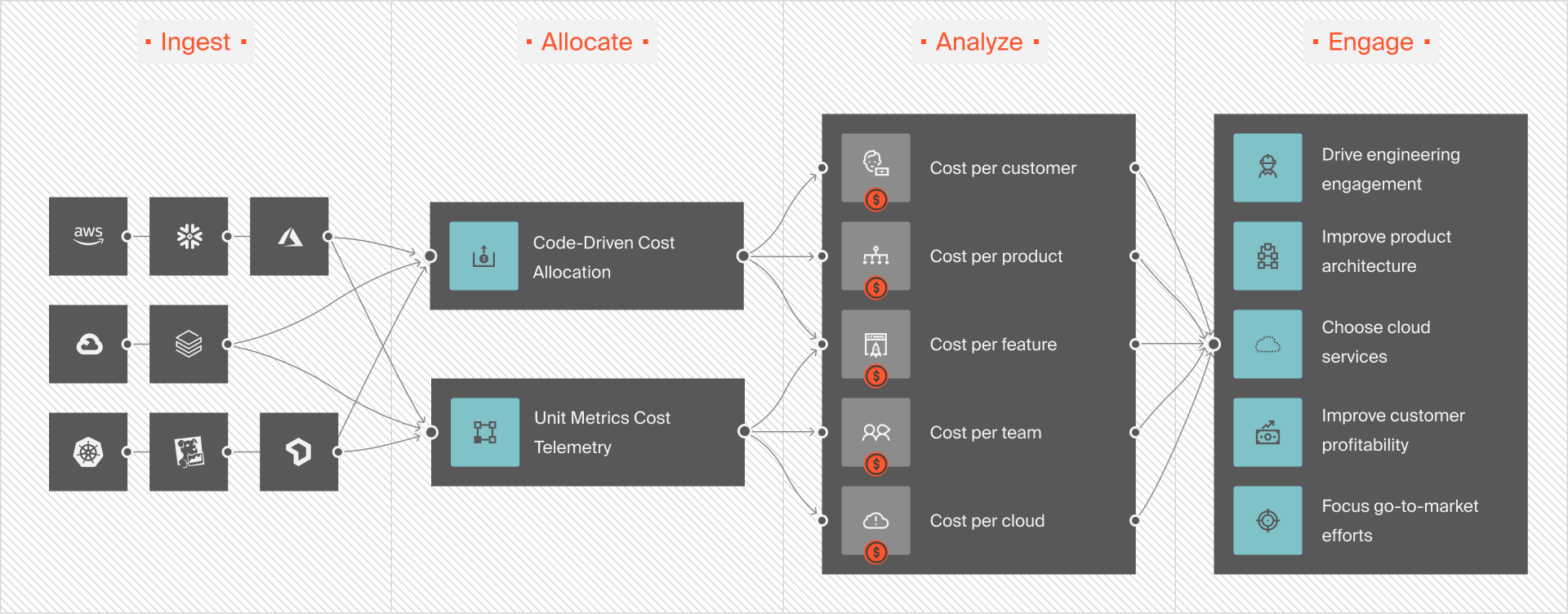
CloudZero integrates with major cloud providers and other platforms to offer a single source of truth for costs and clear visibility into spending.
CloudZero integrates with AWS, Azure, GCP, and Oracle Cloud to consolidate costs. Other integrations include:
- Kubernetes: Manage container orchestration costs.
- Datadog: Monitors performance and usage metrics.
- New Relic: Tracks application performance and infrastructure.
- Databricks: Analyzes data processing costs.
- Snowflake: Offers insights into data warehousing costs.
By integrating with these platforms, CloudZero helps businesses:
- Spot and address cost inefficiencies in real time with cost anomaly detection.
- Optimize resource allocation.
- Reduce the time spent managing cloud costs by automating insights and recommendations.
- Help FinOps teams manage and optimize cloud financial operations.
- Analyze cost trends to predict future spending.
- Allocate costs to specific metrics such as cost per product, project, team, and more
- Improve financial planning and budgeting.
- Support compliance and audit requirements by tracking spending.
- Keep shareholders informed about cloud spending and financial health.
CloudZero has proven its value to its customers. MalwareBytes, Remitly, and NinjaCat used CloudZero to save 6-10 hours weekly on managing cloud costs. Drift saved over 4 million dollars by using CloudZero’s detailed insights and optimizations. You can, too.  to experience CloudZero yourself.
to experience CloudZero yourself.








